What does hazel look like and how to care for a tree?
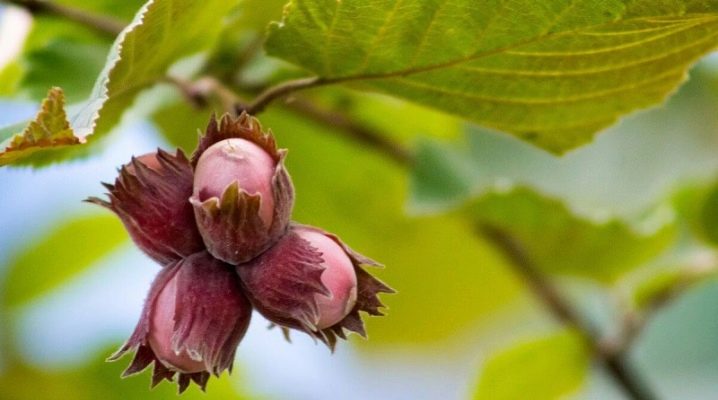
Many enthusiastic gardeners know how hazel or hazel looks like. Red-leaved, large, "Red majestic", other types and varieties of this plant are widely used in the design of public areas, gardens and parks, planted as part of hedges. To understand how hazel blooms in the Urals and in the suburbs, what care it requires, a detailed overview of all the intricacies of its cultivation will help.
general description
Commonly known as hazel, the plant is actually called hazel. It belongs to the birch family and can be represented as a tree or shrub. In total, there are about 20 main species, as well as bastards - hybrid forms formed by crossing the main ones. Depending on the size of the fruit, it can be classified as hazelnuts and hazelnuts.
Some tree-like hazel without root shoots are interesting only as an ornamental plant without obvious economic value.
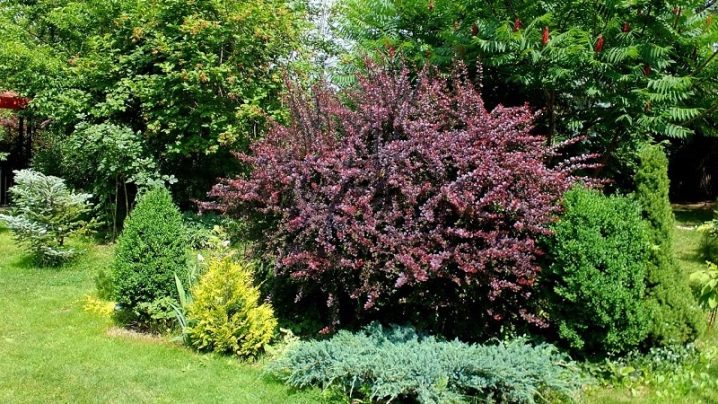
There are some common characteristics that all types of hazel have in common. It looks like a tree or shrub, but is always deciduous, growing in groups to form an underbrush. Other important characteristics include a number of parameters:
- height from 3 to 7 m;
- ovoid or spherical crown shape;
- number of trunks from 1 to 9;
- leaves are large, rounded-oval, with a serrated edge;
- shoot formation is intense;
- branches are flexible, covered with gray-brown bark;
- the root system is powerful, but superficial, symbiotic, coexists with the mycelium;
- flowering for female and male types;
- the fruit is a nut with a rounded dark beige kernel.
Hazel grows in culture everywhere, including in the Urals and Siberia, but in the wild it prefers warmer climatic conditions. In central Russia, it blooms mainly in March, before the leaves appear, in the south - in February, in the climate of the Leningrad region - in April. A tree or shrub bears fruit from 4-5 years regularly, but with different volumes of yield. Walnut ripens in August-September, depending on the climatic zone. The average lifespan of a plant is 50 to 80 years.
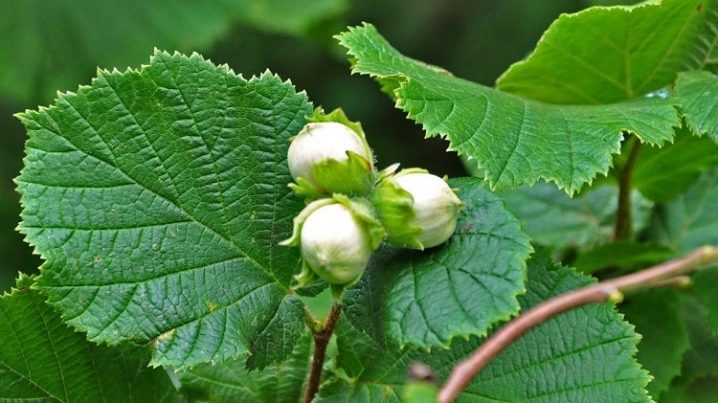
Types and varieties
Far from all types of hazel are grown in culture. Here are the most common ones.
- Tree-like. This plant with a trunk height of up to 30 m can be called the largest subspecies of hazel. It is also called a bear nut. In the wild, it belongs to endangered species, it is grown in protected areas under state protection.

- Ordinary. It looks like a shrub up to 6 meters high, with single and arranged groups of fruits. Common hazel grows slowly, young shoots appear actively starting from the 6th year of life. There are more than 100 varieties suitable for planting in the Moscow region, in the Leningrad region. Among them are hazel "Panhessky", "Fuscorubra", "Firstborn".
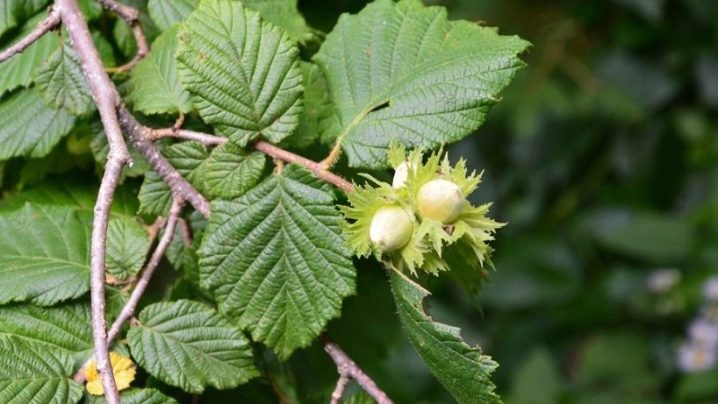
- Red-leaved. A shrub with a burgundy shade of the crown, the wrapper of the fruit is also red, the kernels of the nuts are colored pink, and have an excellent taste. This relative of common hazel with red leaves is also called Red majestic, and the best variety is Moscow Ruby. Ripe fruits turn dark brown.
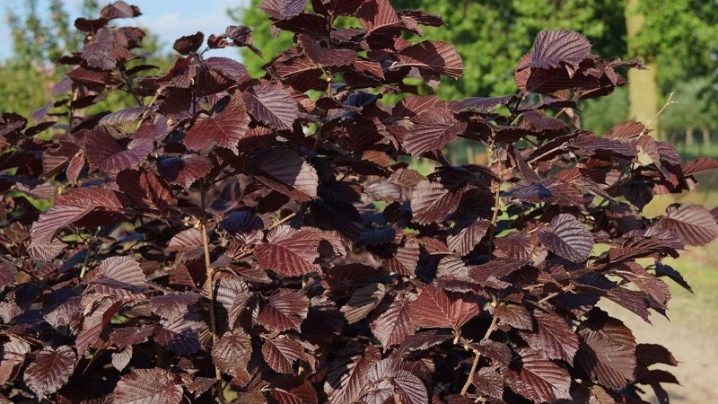
- Large. It differs in the increased size of nuts, is one of the ancestors of cultivated hazel.The shrub is very tall, with a rounded crown. It is also known as the Lombard nut or hazelnut. The main growing regions are Italy, Turkey, the Mediterranean.

- Variegated. A short shrub with shoots up to 3 m long, with a lush dense crown, successfully cultivated in East Asia and Siberia. Plants with red leaves in the spring gradually change color to golden with orange or yellow transitions. The fruits of the plant are edible.

- Manchu. Shrub up to 5 m high with intensively branching shoots, lush crown. Nuts are edible, covered with a thin shell and a shell with thorns. The bush itself is extremely decorative. The species is considered one of the best for cultivation in the northern climatic zones.
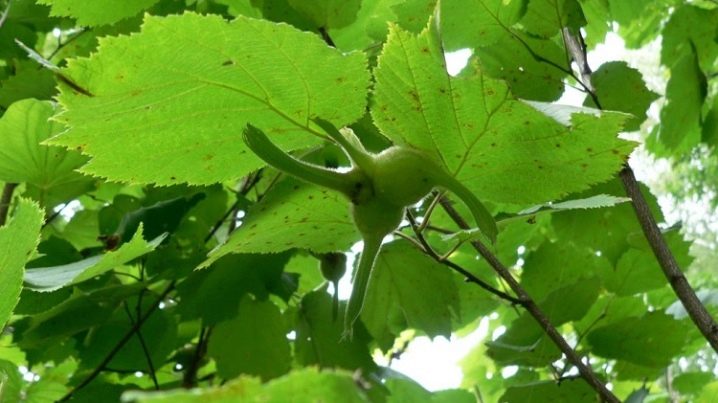
- Horned. A wild-growing subspecies found in the eastern parts of North America. It got its name for the structural features of the shell.

- Siebold. Very ornamental shrub, in spring there is a red spot on green leaves. It occurs naturally in the Far East and Siberia, China, and Japan. The crown in diameter can be three times the height of the plant. Siebold's hazel gave rise to the Manchu variety.
All of these plants can be grown in culture. Most often, species are chosen for planting in plots that combine the decorative appearance and taste of the fruit.
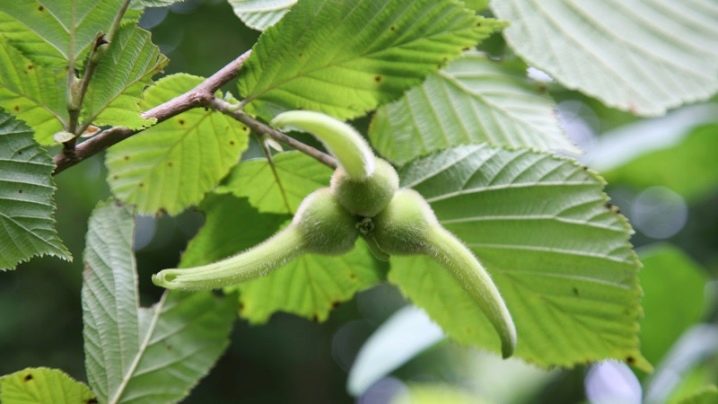
Landing
For hazel, the choice of the place where it is planned to plant the plant is of great importance. A soil with a light composition, neutral acid, fertile will help to achieve high yields. On dense soil, seedlings grow poorly, and later enter into fruiting. Spring is considered the optimal time for planting. It is important to carry it out before sap flow begins. Plants are selected so that they are not damaged, and the length of the roots reaches 50 cm.
The planting process is carried out in a specific sequence.
- Pit preparation. A month before planting, a hole is dug in the soil 0.8 m deep. Crushed stone drainage is laid at the bottom in the form of a pillow 10 cm thick.
- Backfilling of the substrate. It is prepared by mixing turf soil with humus and wood ash. You need to fill the hole up to about half. After that, the soil is watered with a bucket of water.
- Sapling installation. It is placed on a layer of soil, sprinkled with a substrate to the brim. The root collar is not buried; it remains 2 cm above the pit edges.
At the final stage of planting, the hazel is watered, the water is allowed to be absorbed. After that, the trunk circle is mulched with sawdust.
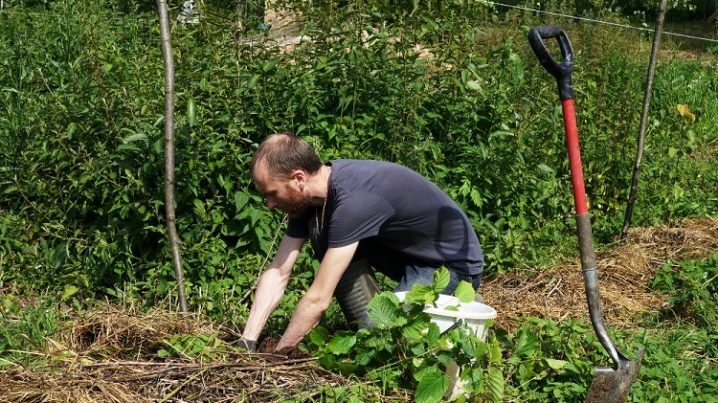
Growing care
When grown in culture, hazel requires special attention in the first years of life. When planning to transplant it to a new place or place it in the garden for the first time, it is important to take care of minimizing stress for the tree, shrub. It will also be important to feed, water and prune the plant in time to create conditions for its growth and development.
Only by observing all the rules, you can easily grow hazel in your garden.
- Conditions. It is important to create good conditions for the hazel. It cannot be placed in a strong shade, built next to buildings, planted large-sized trees. Adequate amount of light promotes better fruit ripening. The soil is maintained in a loose, breathable state. They are regularly reclaimed.
- Watering and feeding. Plants after planting are watered for the first time in a week. Then, the procedure is repeated 6 times annually during the growing season. Each watering requires the introduction of 60-80 liters of water under the root of the hazel. It is enough to pay attention to this once a month, except for long periods of drought. The next day after rain or abundant watering, the soil in the root zone of young plants must be loosened. Mulching by planting mustard or oats helps prevent moisture from evaporating too quickly. Lupine will do too. Top dressing is also important. They are also brought into the trunk circle. In the autumn, hazel need a complex based on 4 kg of humus, 50 g of superphosphate and 30 g of potassium salt.In spring and summer, sources of nitrogen are brought in; urea is suitable. Young plants are fed 10 kg of organic fertilizers every 2 years.
- Pruning. Crown formation is especially important for shrubs with decorative properties. Hazel is usually pruned in the spring, removing excess branches, removing frozen, broken shoots. The first pruning of hazel is always carried out 7 days after planting. The second time the procedure is carried out next spring. At 20 years old, the plant is rejuvenated by removing 2-3 old trunks in order to replace them with new shoots.
- Wintering. During the first three winters after planting, hazel requires insulation. The shoots and the trunk are covered with lutrasil or spunbond, spruce branches. Flexible branches of a shrub can be tilted to the ground, and then wrapped in branches of coniferous trees, sprinkled with snow. An adult hazel tree hibernates well without shelter.

Reproduction
The main ways in which hazel can be propagated apply to the most common types of hazel.
- Cuttings. For him, a part of a mature branch is cut off, then it is placed before rooting in a greenhouse with loose and moist soil. Varietal plants are propagated by cuttings in order to preserve the characteristics of the parent bush.
- Separation of root shoots. They are cut off and then planted in the prepared area.
- Layers. Lateral shoots are bent to the ground in specially dug grooves. In places of contact with the soil, the bark is removed. Layers are fixed in the ground with studs, sprinkled with a light substrate, the top is left outside. The rooted bush is separated only after a year.
- Seeds. This is how the plant reproduces in nature. In gardening, the generative method does not guarantee the preservation of parental traits in the offspring, therefore it is rarely used. It is used primarily by breeders.
And you can also plant cultivated hazelnuts on wild hazel trees. You can take a base seedling in the forest by carefully digging it up, and then transferring it to a new place.

Diseases and pests
The main difficulties in growing hazel in the garden are caused by insect pests. Among the most dangerous:
- nut weevil;
- volnyanka;
- moth.
These insects damage kernels and shells. And they also spread fungal diseases, affect the yield of the crop. The fight against them is always complex. In the fall, the soil is dug up to destroy the larvae. Insects on the bushes are destroyed by insecticidal preparations and collection by hand. White spots on the leaves, yellow, dry areas are a sign of fungal infection. Powdery mildew and yellow spot, diplodiosis can harm hazel trees. Disease control is carried out by timely pruning, as well as protective spraying with copper-based preparations.
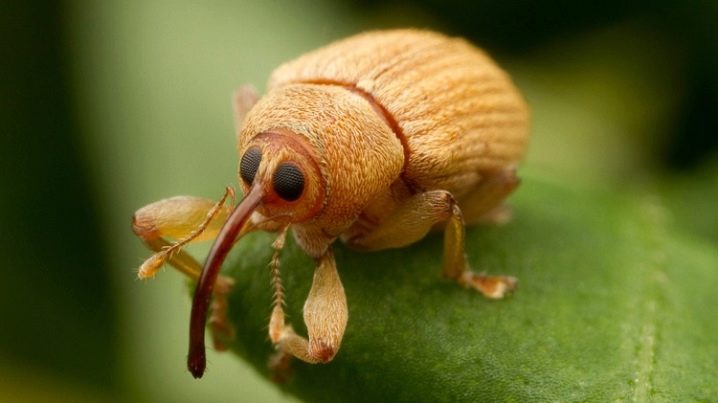
Application in landscape design
In the design of plots, gardens and parks, species of hazel with decorative variegated or red foliage are especially highly valued. Medium and low shrubs are usually used in group plantings. Large-sized rooms are placed individually, as a bright accent. Combinations of hazel with green and burgundy leaves, which form alleys and small groves, look interesting.
And also shrub forms are great for the formation of hedges. They provide good wind protection due to dense foliage and intertwining branches. They tolerate a haircut well, allow you to give the desired shape to the landings. For areas with difficult terrain, dug by ravines or other erosional elements, hazel in landscape design can be a real salvation. Its roots will form the basis for strengthening overly loose soil. Spectacular hazel crowns will be appropriate in places of rest. They will create a light shadow, give originality and well-groomed territory.
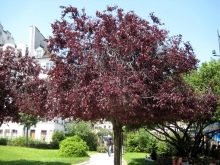
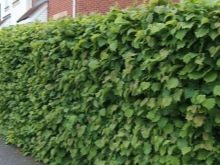
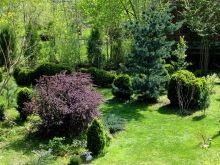









The comment was sent successfully.